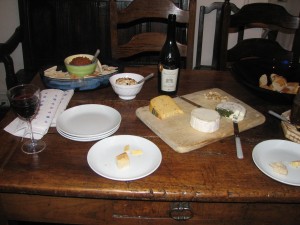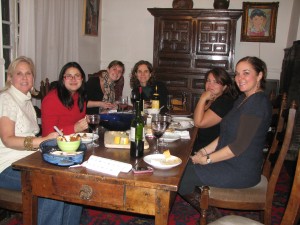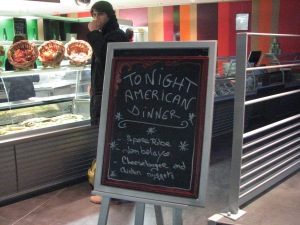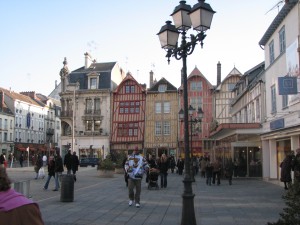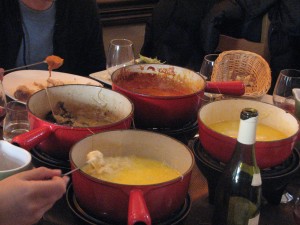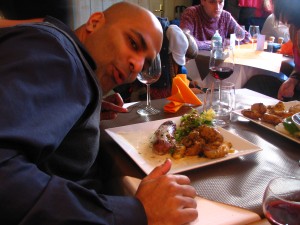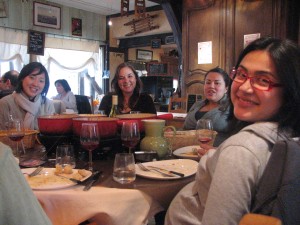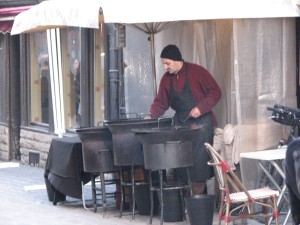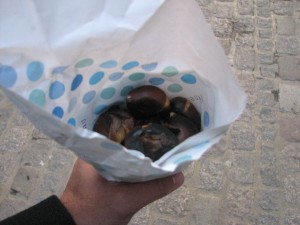A few French classes ago, my teacher showed me an article she read in the newspaper that morning. It was about “les liaisons.” For those of you not “in the know,” the liaison is the little apostrophe that the French use to link two words with adjacent vowels. For example, because they do not want to put two vowels together, they would not say “Le enfant” (the child) but rather “L’enfant.”
This is, at least partially, what gives the French language its fluid, musical sound.
However, according to this article in “Le Parisien,” all that is at risk of changing.
People are now getting lazy and forgetting their liaisons — and the article says that the Euro is to blame.
Before the Euro, there was the Franc. And you would say “Le Franc.” But NOW, people are saying “Le Euro,” a big no-no, apparently.
It’s supposed to be “L’euro.”
Here’s a bad translation of some of the article… thanks to Google Translate.
With the Euro, it loses liaisons
This is an unintended consequence of the single currency. The French almost always wrong in the connections when they say “six euros”, “twenty euros … In a book published yesterday, a former French teacher launches a stone into the pond.
With humor, he calls it “the europathie”, a “disease” was born on 1 January 2002 at the onset of the single currency, which is almost always err on the links or omit to say “six euro “,” twenty euros, “one hundred euros” or “four-twenty euros.
So, Jean-Joseph Julaud, former French teacher, wrote “The Little Book of Liaisons”, a serious book published yesterday. In this small book of liaisons, he offers “rehabilitative exercise.”
Jean-Joseph Julaud, already author of the bestseller “French Literature for Dummies,” focuses on the correct pronunciation of words beginning with h aspirated and a silent h, but mainly on the numbers followed by the noun euro. All adjectives numbers from 1 to 1 000 are listed.
“Most of the French are suffering from chronic europathie the infectious agent was first located at the checkout of supermarkets. The epidemic now affects all segments of the population, even the most literate….Without liaisons, we lose what makes the musicality and fluidity of our language,” says the writer who compared “a bad liaison “to” a small coffee stain on a white shirt. “
And this was in a mainstream newspaper, not some linguistics journal! The article I saw even had a corresponding “charticle,” that told readers when they should use liaisons, as well as a “real people” article with headshots of men-on-the-street answering the question, “Do you always use liaisons?”
Its easy for me to laugh at this. Of course, I thought, only the French would care so much about some silly little grammatical rule. But then, when I thought about it more, I decided it’s good they care so much.
English is always changing, and that’s fine – but it also has the advantage of being one of the most widely spoken languages in the world. But think about about all the languages in the world that are in danger of dying. That’s the case for many indigenous languages, specifically, from the USA to South America and India. Some linguists estimate that nearly half of the world’s 6,900 languages are in danger of dying out in one generation.
Now, I know French isn’t at risk of dying out at at. But, still, when you start to think about language that way, as an everyday way of preserving culture and history, well, it makes sense why some people really take le liaison very seriously.
And if other cultures had the same resources and ability to try to preserve their own languages in the same way, well, I think the whole world would be better off for it.
Read Full Post »

